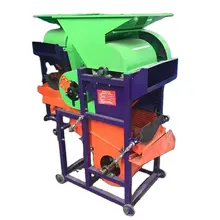Optimizing Performance of Manual Feed Mixers for Livestock Nutrition Efficiency
Nov . 30, 2024 16:05 Back to list
Optimizing Performance of Manual Feed Mixers for Livestock Nutrition Efficiency
Understanding Manual Feed Mixers A Comprehensive Guide
Feed mixers play an essential role in the agricultural sector, particularly in livestock farming, where balanced nutrition is critical to the health and productivity of animals. Among the various types of feed mixers, the manual feed mixer stands out for its simplicity, affordability, and ease of use. This article delves into the features, benefits, and operational guidelines of manual feed mixers.
A manual feed mixer is typically designed for small to medium-sized farms where the scale of operation doesn’t necessitate the investment in larger, mechanized feed processing equipment. These mixers come in various designs, but they generally consist of a mixing chamber, paddles or augers, and a manual mechanism for operation. The absence of an electric motor or complex controls allows farmers to maintain greater control over the mixing process while minimizing costs.
One of the primary advantages of using a manual feed mixer is its simplicity. Farmers can mix various feed ingredients, such as grains, silage, vitamins, and minerals, without the need for electricity or advanced machinery. This is particularly advantageous in rural areas where power supply can be inconsistent or where farmers prefer to minimize operational costs. Manual mixers often require minimal maintenance and can be easily cleaned after use, allowing for greater hygiene and preventing cross-contamination between different types of feed.
manual feed mixer

When it comes to functionality, manual feed mixers come equipped with specific features that enhance their performance. The mixing chamber is usually designed to facilitate thorough mixing, ensuring that the feed components are evenly distributed. This uniformity is crucial, as it helps to guarantee that livestock receive a balanced diet, which is essential for growth, reproduction, and overall health. Some mixers include adjustable paddles that can be modified based on the type of feed being processed, optimizing the mixing process further.
The operation of a manual feed mixer requires a bit of physical effort, as farmers must manually rotate the mixer’s crank or lever to blend the ingredients. The time and effort involved in this process can vary depending on the volume and type of feed being processed. However, this manual aspect also allows farmers to monitor the mixing closely, ensuring that the desired consistency and homogeneity are achieved before feeding their livestock.
Moreover, manual feed mixers encourage a hands-on approach, enabling farmers to be more engaged in the feeding process. This engagement can lead to better understanding and observation of the animals’ responses to different feed formulations, allowing for adjustments based on their nutritional needs or preferences. This level of involvement can foster a deeper connection between the farmer and their livestock, which is beneficial for animal welfare and productivity.
In conclusion, while technology continues to advance in the agriculture sector, manual feed mixers remain a viable and practical solution for many farmers. Their affordability, ease of use, and low maintenance requirements make them an attractive option for those managing small to medium-sized farms. By providing an effective means of ensuring balanced nutrition for livestock, manual feed mixers play a crucial role in enhancing farm productivity and animal health. For farmers seeking a reliable mixing solution, investing in a manual feed mixer can lead to significant benefits, reinforcing the importance of quality feed in successful livestock management.
-
Hot Sale 24 & 18 Door Rabbit Cages - Premium Breeding Solutions
NewsJul.25,2025
-
Automatic Feeding Line System Pan Feeder Nipple Drinker - Anping County Yize Metal Products Co., Ltd.
NewsJul.21,2025
-
Automatic Feeding Line System Pan Feeder Nipple Drinker - Anping County Yize Metal Products Co., Ltd.
NewsJul.21,2025
-
Automatic Feeding Line System - Anping Yize | Precision & Nipple
NewsJul.21,2025
-
Automatic Feeding Line System - Anping Yize | Precision & Nipple
NewsJul.21,2025
-
Automatic Feeding Line System-Anping County Yize Metal Products Co., Ltd.|Efficient Feed Distribution&Customized Animal Farming Solutions
NewsJul.21,2025






